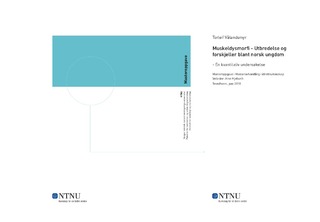| dc.description.abstract | Purpose: The purpose of the current study was to examine the prevalence of muscle dysmorphia (MD) in a population of young men and women aged 18-30 years old who did strength training on a regular basis. Another goal with this study was to examine the effects of gender, age, BMI, training volume, type of strength training and supplement use on MD-symptoms, where differences between the genders were of special interest. Gender differences were tried explained through Bourdieu and his societal sociology.
Method: A total of 431 women (n191) and men (n240) participated in the study. The study was conducted using a quantitative research design, where data was collected by a questionnaire. The Muscle Dysmorphic Disorder Inventory (MDDI) was used to gain information of the participants´ MDsymptoms, an instrument that is proven both a valid and reliable instrument in MDresearch. Participants scoring >39 in the MDDI were classified as dysmorphic, while participants scoring < 39 were classified as non-dysmorphic. The statistical program STATA was used to process and analyze the data, where bivariate analyzes, a regression model and a correlation matrix were used.
Results: The study found a prevalence of MD of 22% in the total selection (N431). BMI, hypertrophy training, training volume, age and supplement use was found to significantly influence MDsymptoms (p< 0.05). Regression analyses showed that gender had no significant influence on MD-symptoms, but the T-test showed us that it was still a significant difference in the mean scores between men (32.10 ± 8.90) and women (29.65 ± 8.43).
Conclusion: The current study shows a higher prevalence of MD among young men and women compared to earlier research, which indicates that the disorder is increasing within strength training – populations. The study also indicates that MD to a large extent affects female populations, with a prevalence of 17% in this study, and women is suggested to gain more interest in further research on MD. | nb_NO |
